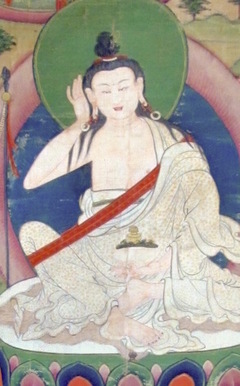Songs and Poems Series
English (104) | Deutsch (26) | Español (4) | Français (21) | Italiano (1) | Português (6) | 中文 (15) | བོད་ཡིག (104)
A selection of spiritual songs (mgur; glu) or poems:
Acrostic
Advice
by
Dorje Lingpa
by
Nāropa
by
Sera Khandro
Classification
Commentaries
Compassion
Devotion
Dzogchen
by
Lachung Apo
Feast Songs
by
Jigme Lingpa
General
Impermanence
Joy
by
Dorje Lingpa
Lamdré
Longevity
Mahāmudrā
Nonsectarianism
Prayer
Sacred Places
by
Milarepa
